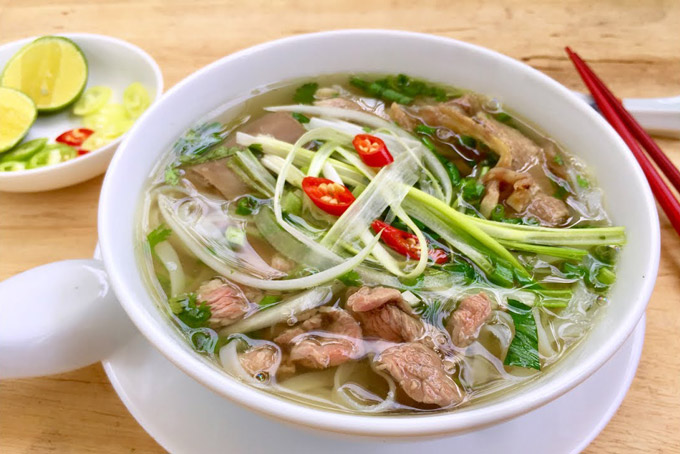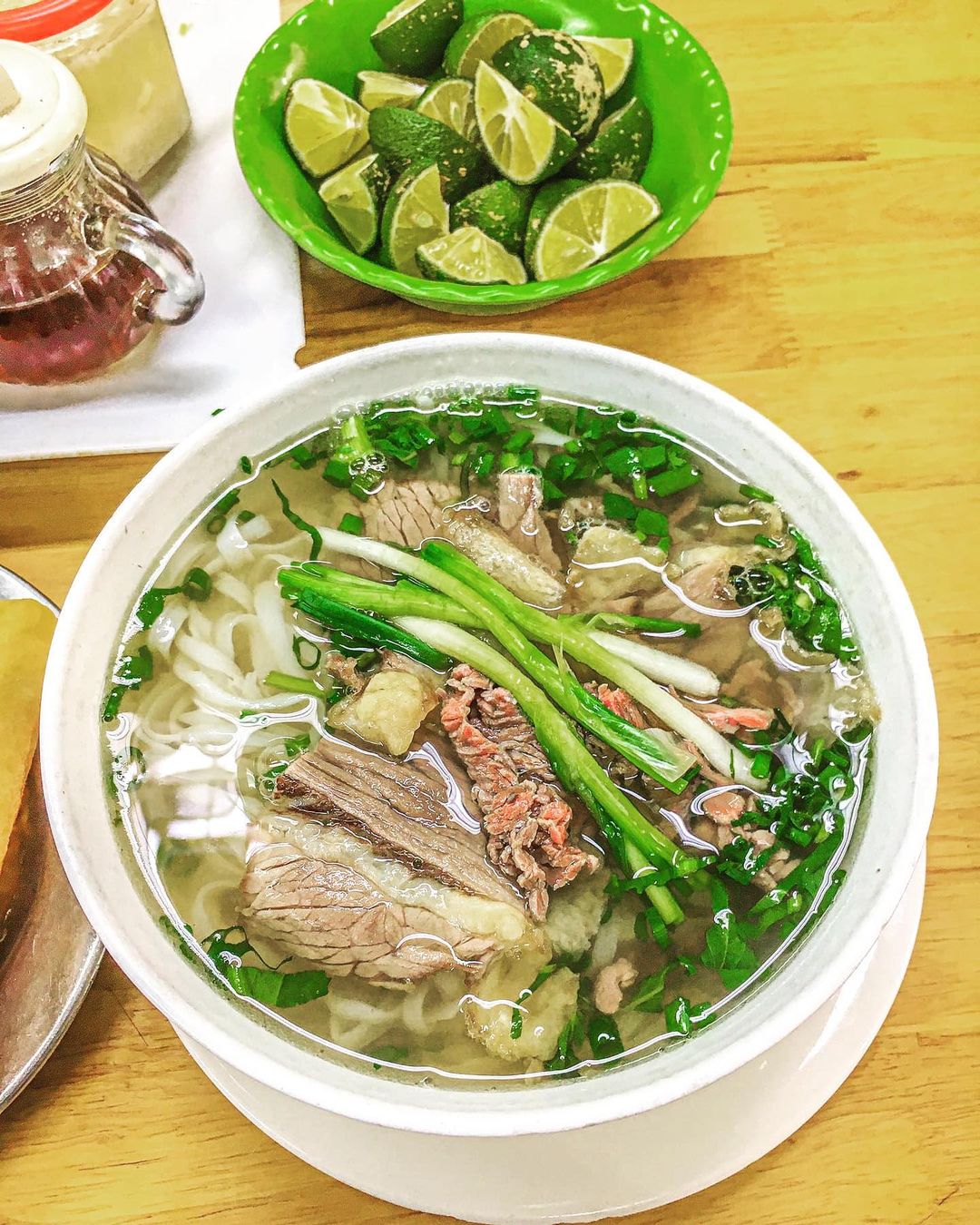Pho Hanoi
Pho is one of the most famous Vietnamese dishes, especially in Hanoi, where it originates. It is a noodle soup consisting of broth, rice noodles, and usually either beef or chicken. The dish is known for its delicate flavors and fresh ingredients.

1. What makes Pho Hanoi special?
-
Broth: The broth of Pho Hanoi is its most distinctive feature. It is made by simmering beef bones or chicken bones for hours to extract natural sweetness and a clear, flavorful broth. The broth is delicate and light, unlike some other versions of Pho, which can be richer or thicker.
-
Pho Noodles: The rice noodles used in Pho Hanoi are soft and thin, and they do not stick together when placed in the hot broth, making the texture light and easy to enjoy.
-
Beef or Chicken: In Hanoi, Pho is typically made with thinly sliced raw beef that cooks in the hot broth, or shredded chicken. The meat adds a tender and juicy element to the dish.
-
Herbs and Accompaniments: Pho Hanoi is usually served with fresh herbs like cilantro, Thai basil, and lime wedges. Bean sprouts, chili, and fish sauce can be added to enhance the flavor, depending on individual preferences.
2. Unique Characteristics of Pho Hanoi
-
Simplicity: The dish emphasizes the natural flavors of the ingredients, using minimal seasoning to preserve the purity of the broth. This makes Pho Hanoi lighter and more aromatic than Pho found in other regions.
-
Cultural Tradition: Pho is more than just a meal; it's a cultural experience. Many locals in Hanoi enjoy Pho as a quick breakfast or lunch. It's a beloved part of the everyday life of the people.

3. Where to try Pho Hanoi?
-
Pho Bat Dan: A well-known Pho restaurant in Hanoi, famous for its traditional style and flavorful broth.
-
Pho Gia Truyen: Another local favorite, located in the Old Quarter, where you can taste the authentic Pho Hanoi.
-
Street Vendors: Pho can also be found at numerous street food vendors across the city, each offering their own unique take on this classic dish.
Pho Hanoi is more than just a dish; it's a reflection of the culture, history, and culinary art of the Vietnamese people.

